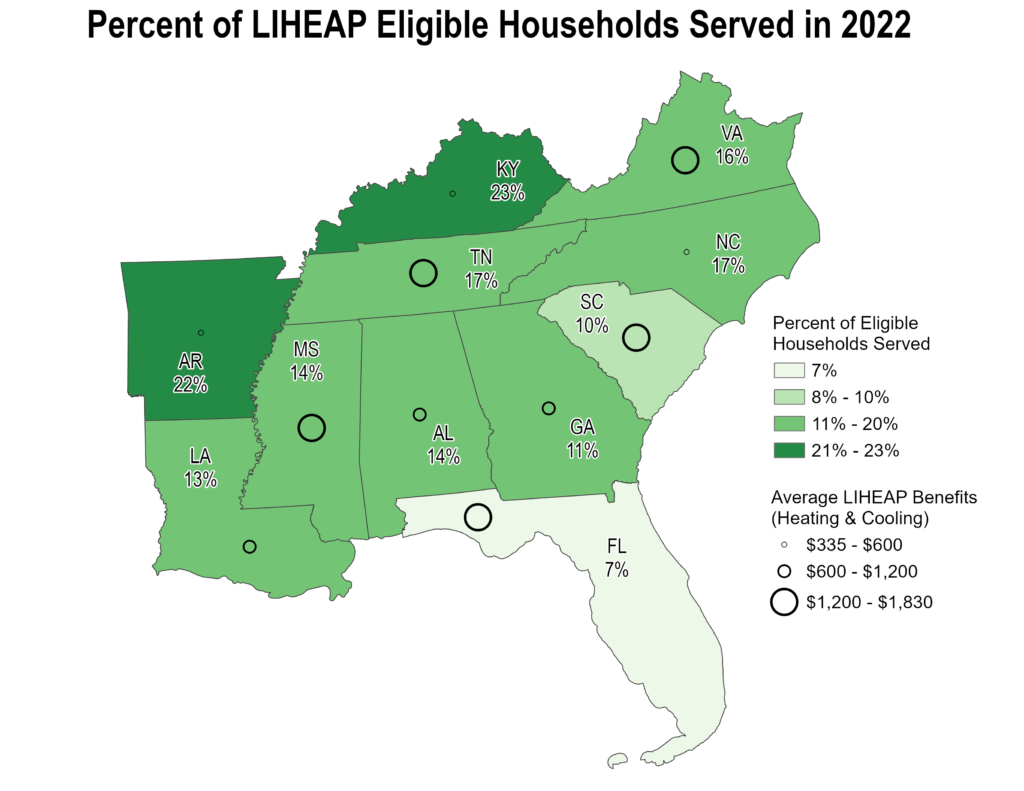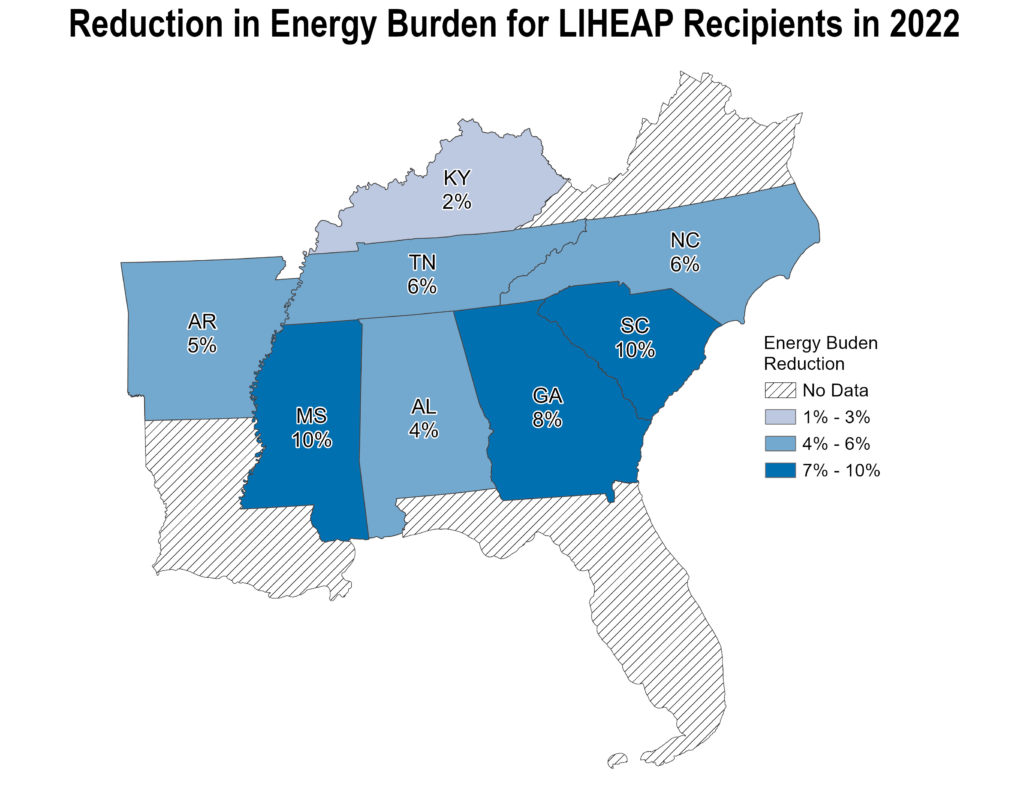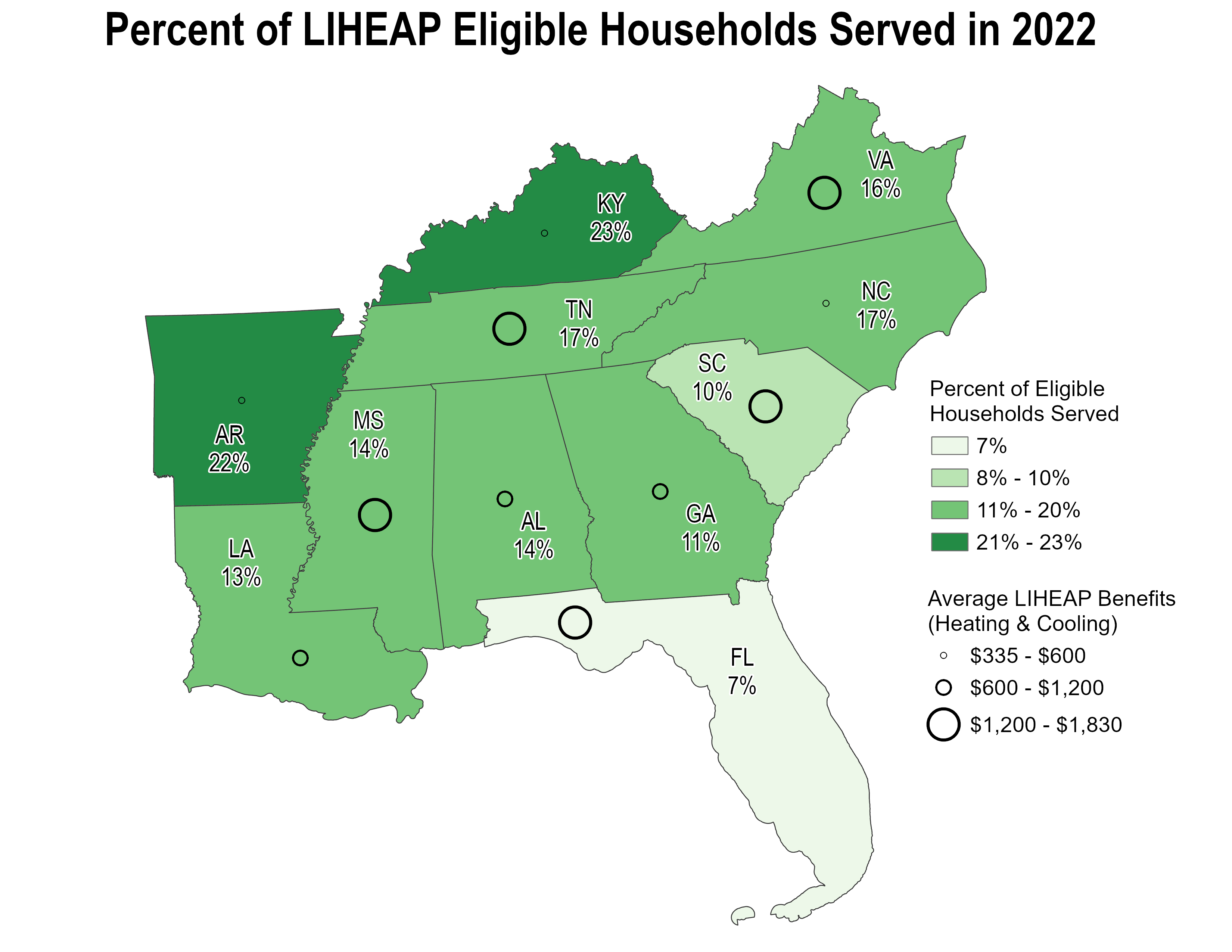Month: August 2024
August Map of the Month
By: Hanka Kirby


Source: LIHEAP Data Warehouse
States in the Southeast have some of the highest rates of energy insecurity in the country, as we noted in a previous post. Because of this, energy assistance and weatherization programs available from local, state, federal, and utility sources are critical sources of support for thousands of households in the region who struggle to pay their energy bills.
One of the most vital programs is the Low-Income Home Energy Assistance Program (LIHEAP), managed by the U.S. Department of Health and Human Services (HHS), which since 1981 has provided financial assistance for low-income households to help prevent utility disconnections and assist with heating and cooling homes. According to the National Energy Assistance Directors’ Association (NEADA), nearly one-third of LIHEAP-eligible households reported forgoing food to pay their utility bills, 40% had sacrificed medical care, and one-fourth had someone fall ill because their home was too cold. To meet these critical needs, LIHEAP provides a range of support, including financial help for heating, cooling, crisis, and weatherization assistance, in addition to other services that reduce energy burden.
This month’s maps use data from the LIHEAP Data Warehouse to shed light on the scope and impact of LIHEAP assistance in the Southeast. Through LIHEAP, HHS makes grants to states, tribes, and territories that are typically administered through local community action agencies. However, the need far exceeds the resources available and local agencies often must make difficult decisions about how to distribute funds.
As the map shows, LIHEAP reached 15% of eligible households in the Southeast on average. This ranges from Arkansas and Kentucky, which served 22% and 23% of their qualified households, respectively, to Florida, which served 7% of the eligible population. Variation in state aid sheds light on the difficult policy tradeoff between “maximizing the number of households that receive funding and maximizing the level of benefits each household receives.”
LIHEAP gives flexibility to grantees, allowing states to decide how to allocate funds. While some states like Florida, Mississippi, and South Carolina opt to provide a higher level of benefit, others, including Arkansas, Kentucky, and North Carolina, provide lower benefit levels but reach a greater proportion of eligible households. One study found that LIHEAP tends to benefit “marginally energy insecure households more than severely energy insecure,” though this may also be because households with more resources can more easily navigate assistance applications. While the variation between states can make it difficult to draw universal conclusions about LIHEAP, the flexible nature of the program allows each state to tailor its approach to its specific needs.
What is clear is that there have been real benefits for the households that were served. In FY23, the most recent data available, 1.2 million households in the South received some form of LIHEAP assistance. The loss of power due to a utility disconnection was averted or resolved more than 3.2 million times. In the Southeast, participating households had a 6% reduction in energy burden on average, with South Carolina and Mississippi having an average energy burden reduction of 10%. This support helps reduce energy insecurity, prevent dangerous health impacts, and promote resiliency for millions of families.
Perhaps the largest reason for the small percentage of eligible households reached is simply the level of program funding. As energy costs rise, so have the number of people who struggle to pay their utility bills. Existing LIHEAP funding cannot keep up with demand. Many states and community action agencies have focused assistance on the most vulnerable households: those with seniors, disabilities, and children under the age of five.
The program works, yet a substantial portion of the eligible population cannot be reached without expanded funding. LIHEAP provides life-critical heating and cooling support. It protects those most susceptible to extreme heat and cold, prevents dangerous health impacts, and promotes resiliency. As energy costs and extreme weather events rise, it is critical to recognize how year-round heating and cooling assistance become increasingly necessary, and how LIHEAP can work in concert with weatherization assistance to support vulnerable communities.




